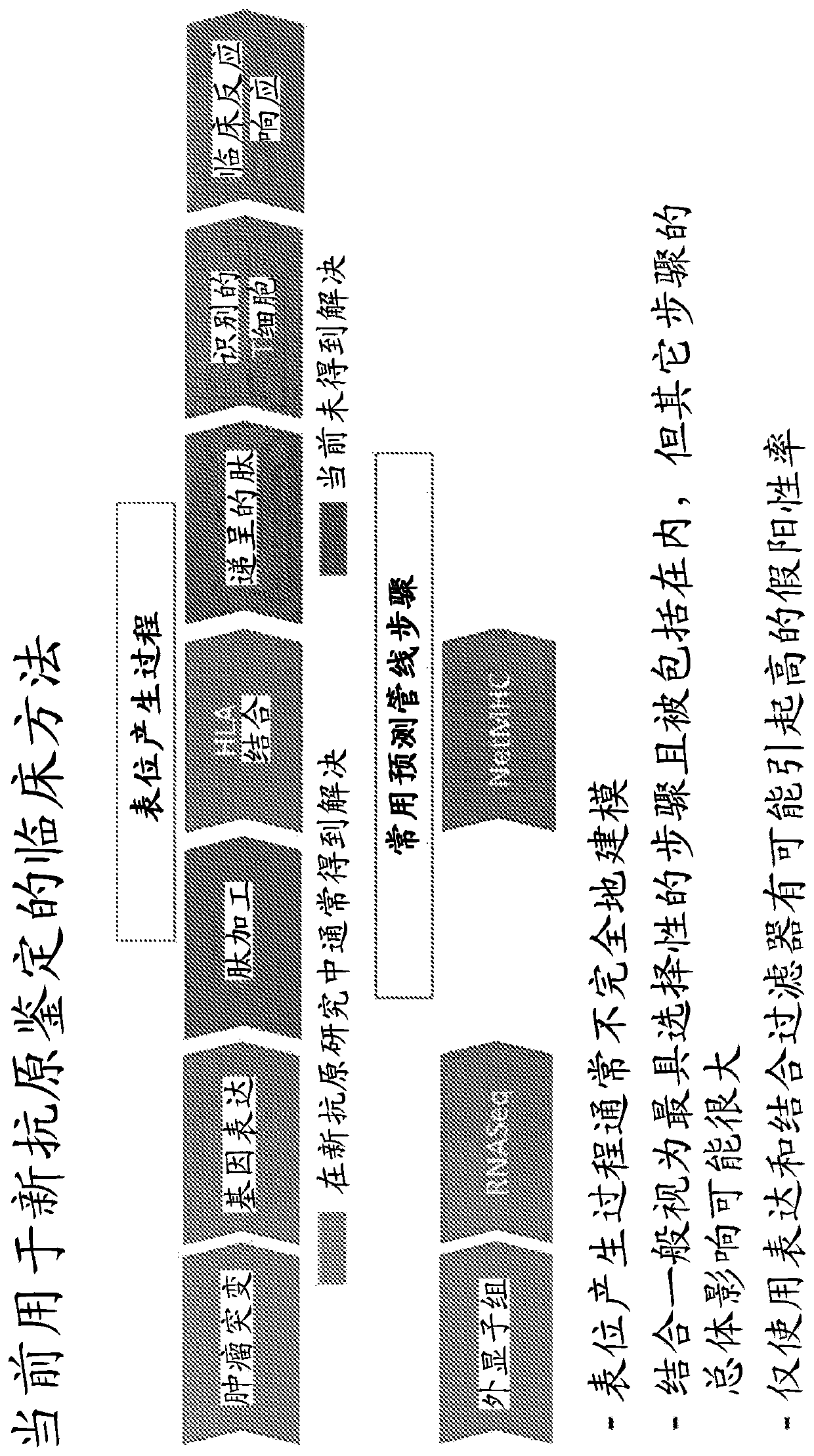Alphavirus neoantigen vectors
A technology of alpha virus and antigen, applied in the field of alpha virus neoantigen carrier, which can solve the problems of inefficient use of autoimmunity and omission of candidate neoantigens in vaccines
- Summary
- Abstract
- Description
- Claims
- Application Information
AI Technical Summary
Problems solved by technology
Method used
Image
Examples
example
[0707] In another embodiment, the deviation parameter θ h 0 Can be shared by the gene family of the MHC allele h. That is, the bias parameter θ of the MHC allele h h 0 can be equal to θ 基因(h) 0 , where gene (h) is the gene family of the MHC allele h. For example, the class I MHC alleles HLA-A*02:01, HLA-A*02:02, and HLA-A*02:03 can be assigned to the "HLA-A" gene family, and these MHC alleles The bias parameter θ for each of h 0 Can be shared. As another example, the class II MHC alleles HLA-DRB1:10:01, HLA-DRB1:11:01, and HLA-DRB3:01:01 can be assigned to the "HLA-DRB" gene family, and these MHC alleles Bias parameter θ for each of the genes h 0 Can be shared.
[0708] Returning to equation (2), as an example, using the affine dependency function g h (·) Among the identified m = 4 different MHC alleles, peptide p k The probability of being presented by the MHC allele h=3 can be generated by:
[0709]
[0710] where x 3 k is the allelic interaction variable...
Embodiment 1
[0750] X.C.1. Example 1: Maximum value of independent allele model
[0751] In one embodiment, the training module 316 causes the peptide p associated with a set of multiple alleles H k The estimated probability of presentation u k With the probability of presentation u of each MHC allele h in set H determined based on cells expressing the monoallele k h∈H The variation of is modeled as described above in connection with equations (2)-(11). Specifically, the presentation likelihood u k can be u k h ∈H any function of . In one embodiment, as shown in equation (12), this function is a maximum function, and the probability u k can be determined as the maximum probability of presentation for each MHC allele h in set H.
[0752]
Embodiment 21
[0753] X.C.2. Example 2.1: Sum function model
[0754] In one embodiment, the training module 316 makes peptide p by k The estimated probability of presentation u k Modeling:
[0755]
[0756] where element a h k For the peptide sequence p k Associated multiple MHC alleles H is 1 and x h k Indicates the encoded related peptide p k and the allelic interaction variable for the corresponding MHC allele. The set of parameters θ for each MHC allele h h The value of θ can be obtained by making about θ h is determined by minimizing the loss function for each instance in the subset S of training data 170 produced by cells expressing a single MHC allele and / or by cells expressing multiple MHC alleles. dependency function g h The dependency function g introduced in Section X.B.1 above can be h any of the forms.
[0757] According to equation (13), the peptide sequence p k The probability of presentation to be presented by one or more MHC alleles h can be calculated by a...
PUM
 Login to View More
Login to View More Abstract
Description
Claims
Application Information
 Login to View More
Login to View More - Generate Ideas
- Intellectual Property
- Life Sciences
- Materials
- Tech Scout
- Unparalleled Data Quality
- Higher Quality Content
- 60% Fewer Hallucinations
Browse by: Latest US Patents, China's latest patents, Technical Efficacy Thesaurus, Application Domain, Technology Topic, Popular Technical Reports.
© 2025 PatSnap. All rights reserved.Legal|Privacy policy|Modern Slavery Act Transparency Statement|Sitemap|About US| Contact US: help@patsnap.com



